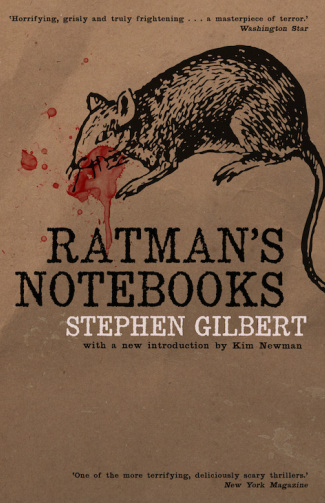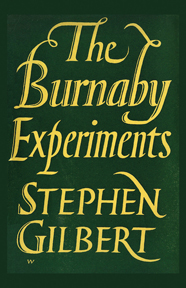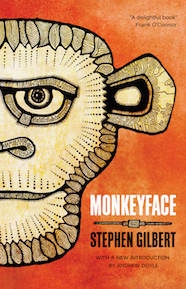|
BOOK DETAILS
Trade paper ISBN-13: 978-1939140609 List Price: $17.99 U.S. Pages: 178 Published: 2013 |
Ratman’s Notebooks (1968)
Stephen Gilbert With a new introduction by Kim Newman Book Description
When his nagging mother discovers a rat infestation, the anonymous writer of these notebooks sets out to drown the pests, but finds himself unable to go through with it. Instead, he befriends the rats, learning to train and communicate with them. Before long he has the idea of using the rats for revenge against a world in which he has been a failure. His target is his hateful boss, Mr. Jones, who treats him with supreme disrespect and plans to fire him and replace him with someone less expensive. The narrator records his plans in chilling detail as his campaign for vengeance progresses from vandalism to robbery to the most horrific of murders . . . The basis for the 1971 film Willard and its 2003 remake, Stephen Gilbert’s bestseller Ratman’s Notebooks (1968) returns to print in this edition, the first in 40 years. This edition features a new introduction by Kim Newman, who argues that the success of Ratman’s Notebooks demonstrated the viability of horror as a mainstream literary genre and paved the way for the horror publishing boom of the 1970s and the early novels of Stephen King and James Herbert. |
reviews
‘Horrific, grisly and truly frightening . . . a masterpiece of terror.’ - Washington Star
‘One of the more terrifying, deliciously scary thrillers.’ - New York Magazine
‘This is a beastly business that will make your flesh creep. A magnificently malignant horror story to which you will be unavoidably committed.’ - Kirkus Reviews
“Valancourt should be congratulated for once more bringing work such as this back into print.” – Neil Williams, This Is Horror
‘You'll wish you never started reading the damn thing in the first place but you’ll keep reading till the bitter end . . . it is low-key and deadpan . . . a compelling tour de force.’ - Chattanooga Times
‘Malevolent Gothic whimsy . . . the rat ride is entertaining.’ - The Atlantic
‘One of the more terrifying, deliciously scary thrillers.’ - New York Magazine
‘This is a beastly business that will make your flesh creep. A magnificently malignant horror story to which you will be unavoidably committed.’ - Kirkus Reviews
“Valancourt should be congratulated for once more bringing work such as this back into print.” – Neil Williams, This Is Horror
‘You'll wish you never started reading the damn thing in the first place but you’ll keep reading till the bitter end . . . it is low-key and deadpan . . . a compelling tour de force.’ - Chattanooga Times
‘Malevolent Gothic whimsy . . . the rat ride is entertaining.’ - The Atlantic
ALSO AVAILABLE THROUGH ONLINE RETAILERS
|
PAPERBACK
Amazon US Amazon UK Barnes and Noble Wordery* *free shipping to 40 countries Fishpond* *free shipping worldwide Waterstones |
MORE TITLES BY THIS AUTHOR
AUTHOR BIOGRAPHY

Stephen Gilbert (1912-2010) was born in Newcastle, Co. Down in 1912. He was sent to England for boarding school from age 10 to 13 and afterwards to a Scottish public school, which he left without passing any exams or obtaining a leaving certificate. He returned to Belfast, where he worked briefly as a journalist before joining his father’s tea and seed business. In 1931, just before his nineteenth birthday, Gilbert met novelist Forrest Reid, by that time in his mid-fifties. Reid’s numerous novels reflect his lifelong fascination with teenage boys, and he was quickly drawn to Gilbert; the two commenced a sometimes turbulent friendship that lasted until Reid’s death in 1947. Reid acted as mentor to Gilbert, who had literary aspirations, and ultimately depicted an idealized version of their relationship in the novel Brian Westby (1934).
Gilbert’s first novel, The Landslide (1943), a fantasy involving prehistoric creatures which appear in a remote part of Ireland after being uncovered by a landslide, appeared to generally positive reviews and was dedicated to Reid. A realistic novel, Bombardier (1944), followed, based on Gilbert’s experiences in the Second World War. Gilbert’s third novel, Monkeyface (1948), concerns what seems to be an ape, called “Bimbo,” discovered in South America and brought back to Belfast, where it learns to talk. The Burnaby Experiments appeared in 1952, five years after Reid’s death, and is a thinly disguised portrayal of their relationship from Gilbert’s point of view and a belated response to Brian Westby. His final novel, Ratman’s Notebooks (1968), the story of a loner who learns he can train rats to kill, would become his most famous, being twice filmed as Willard (1971; 2003).
Gilbert married his wife Kathleen Stevenson in 1945; the two had four children, and Gilbert devoted most of his time from the 1950s onward to family life and his seed business. He died in Northern Ireland in 2010 at age 97.
Gilbert’s first novel, The Landslide (1943), a fantasy involving prehistoric creatures which appear in a remote part of Ireland after being uncovered by a landslide, appeared to generally positive reviews and was dedicated to Reid. A realistic novel, Bombardier (1944), followed, based on Gilbert’s experiences in the Second World War. Gilbert’s third novel, Monkeyface (1948), concerns what seems to be an ape, called “Bimbo,” discovered in South America and brought back to Belfast, where it learns to talk. The Burnaby Experiments appeared in 1952, five years after Reid’s death, and is a thinly disguised portrayal of their relationship from Gilbert’s point of view and a belated response to Brian Westby. His final novel, Ratman’s Notebooks (1968), the story of a loner who learns he can train rats to kill, would become his most famous, being twice filmed as Willard (1971; 2003).
Gilbert married his wife Kathleen Stevenson in 1945; the two had four children, and Gilbert devoted most of his time from the 1950s onward to family life and his seed business. He died in Northern Ireland in 2010 at age 97.





